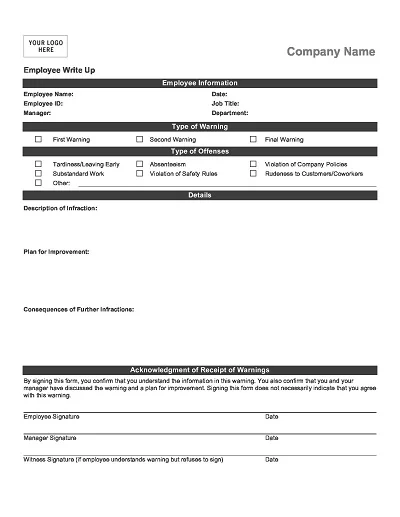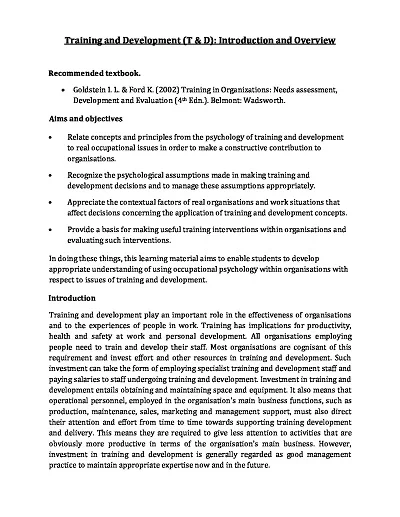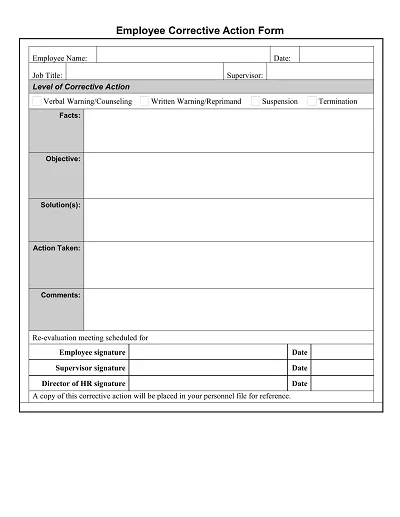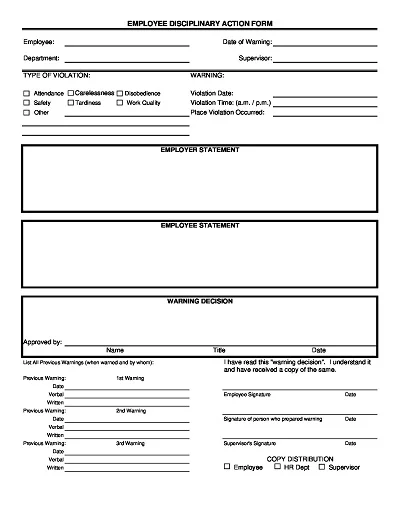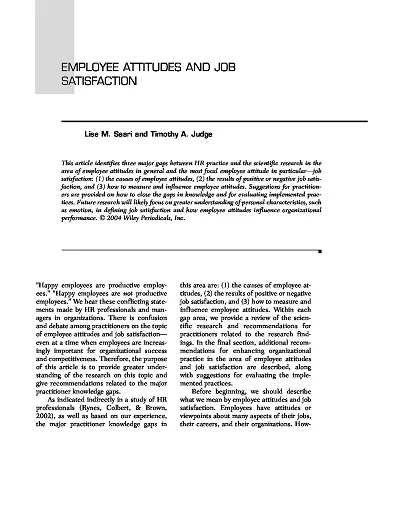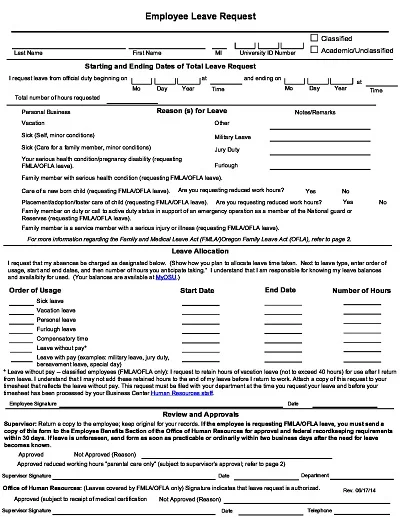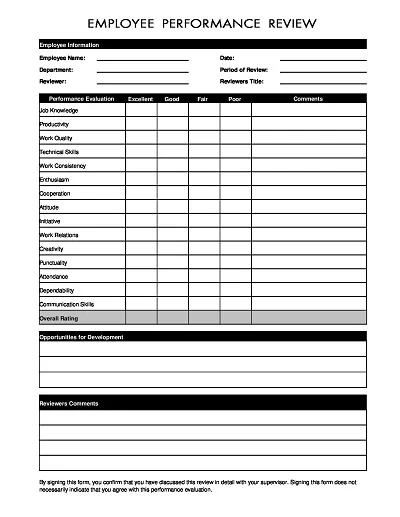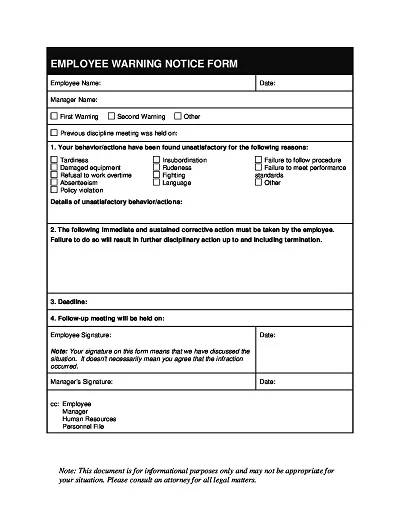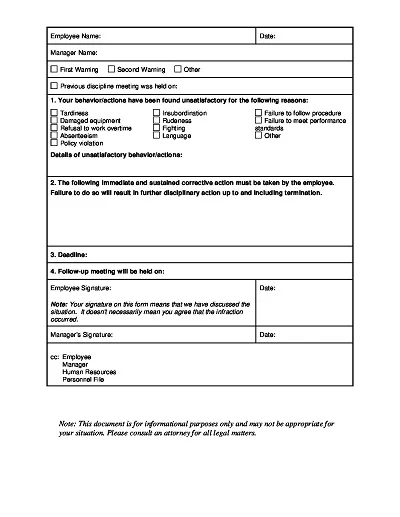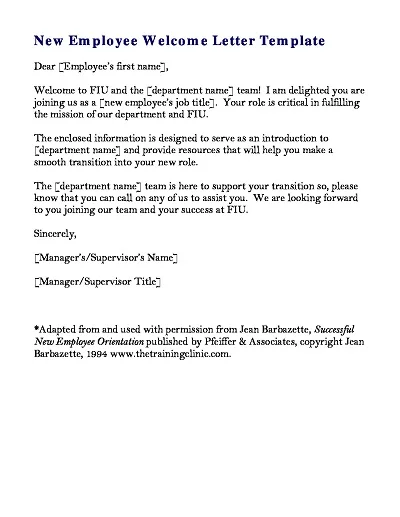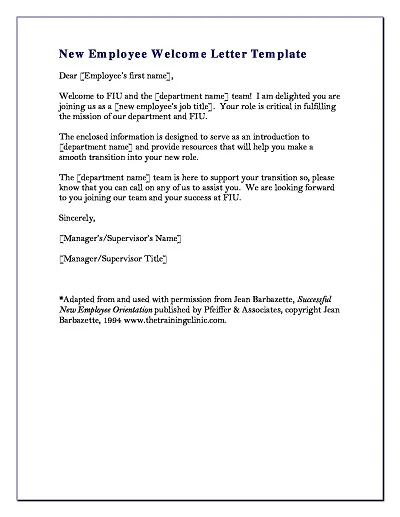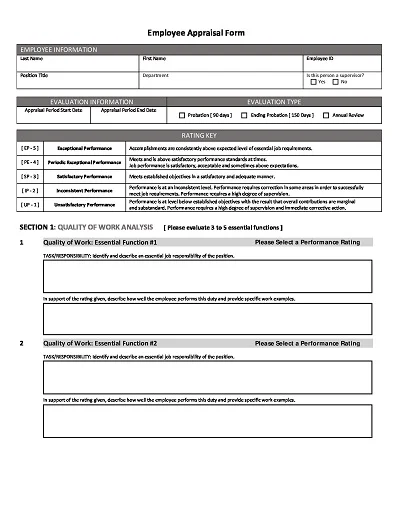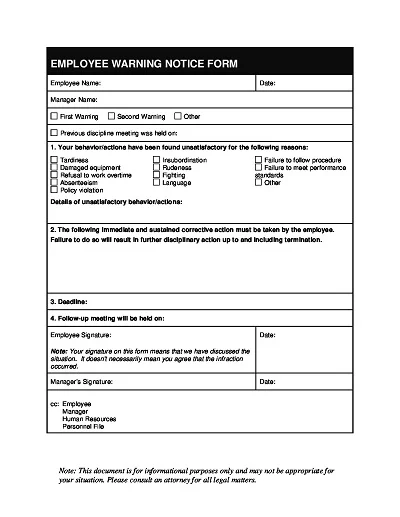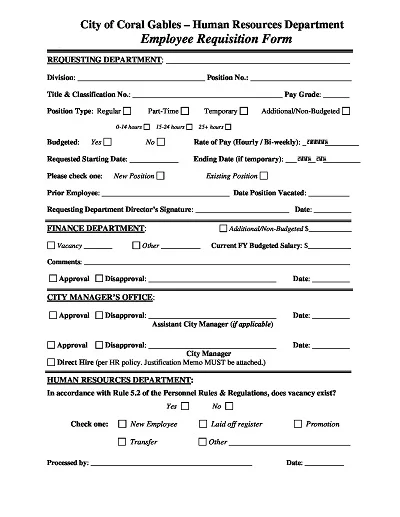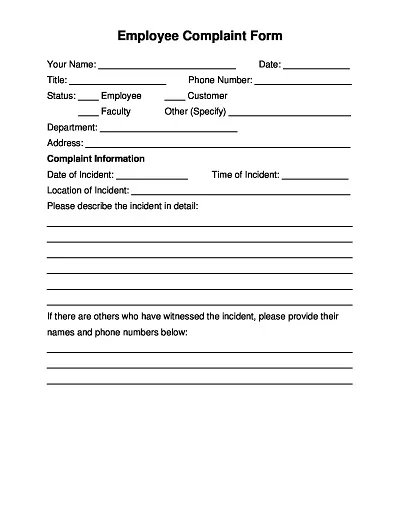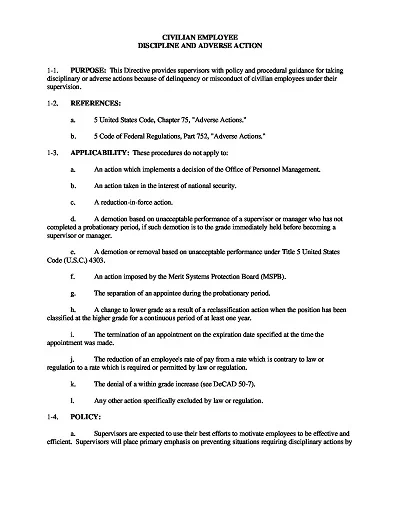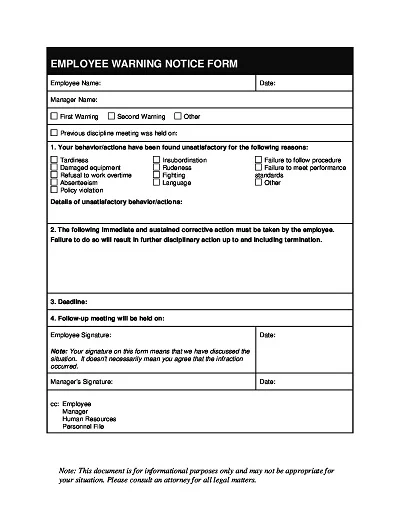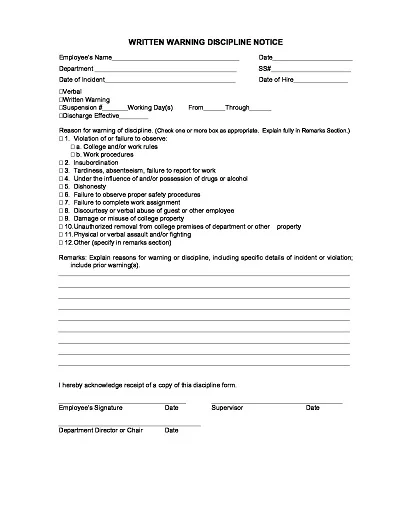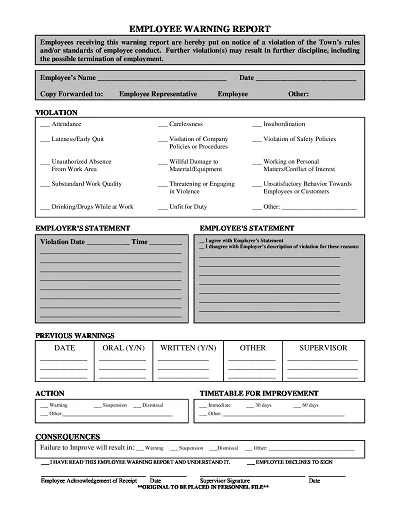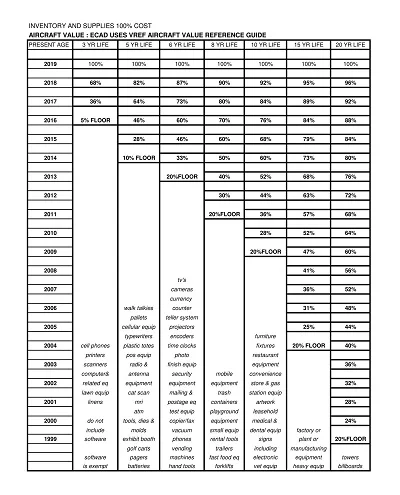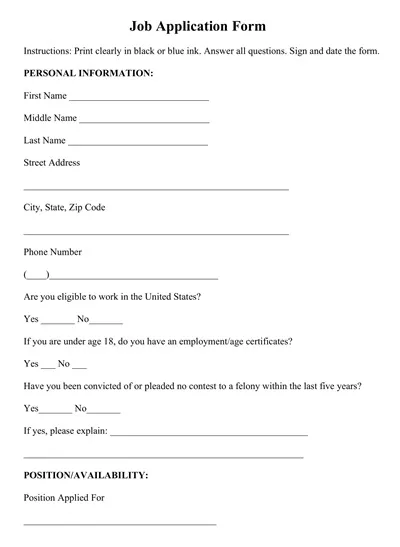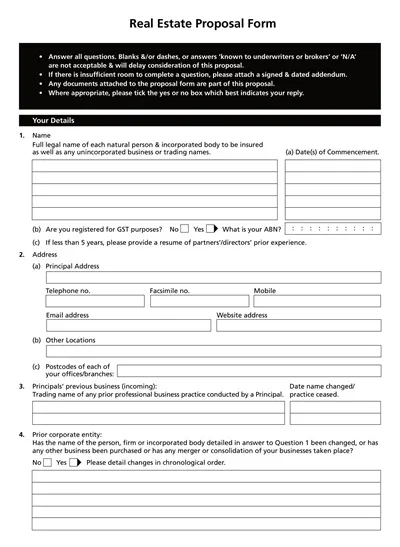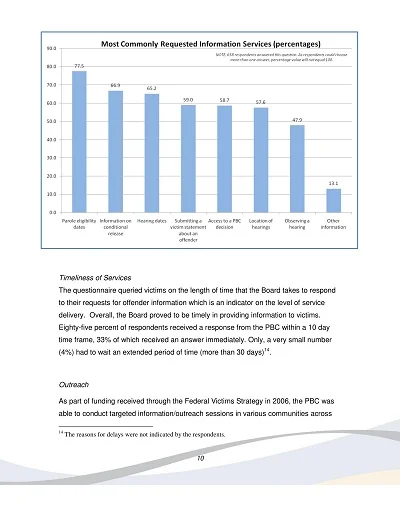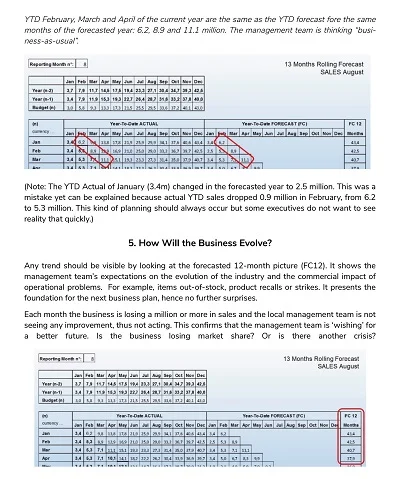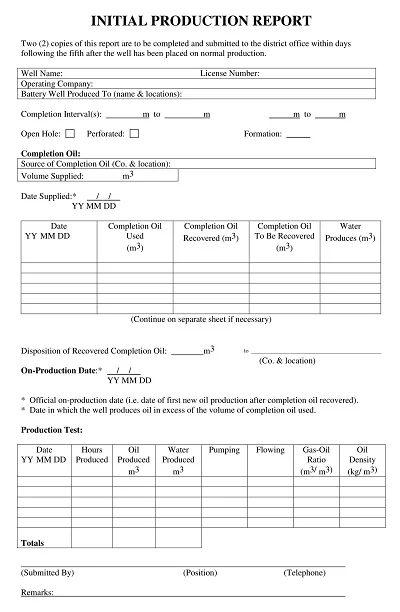An Employee Write Up Form Template is a template employers complete when addressing specific Behaviors of Care or Concerns of an employee, meaning the employee has violated Company Policies and Procedures or is not meeting the company’s standards in their job performance. This enables using a standard template that includes the date of the violation, the specific employees involved, the nature of the breach, and what action was taken against it.
Usually, it consists of parts that describe the problem, indicate the prior notifications, describe potential shifts in the employee’s behavior or performance, and indicate the employee’s awareness of the situation. To be more specific, this form is essential in human resources management as it helps maintain the fairness and equal implementation of disciplinary measures in an organization.
Download Free Employee Write-Up Form Templates
What is an Employee Write-Up Form?
An Employee Write-Up Form is a report completed by an employer or a manager to write a report on matters concerning the employee in the workplace. This form generally includes the nature of the problem, any prior conversations or counseling related to the matter, the effects of the behavior or performance on the work environment, and the anticipated changes or enhancements.
Also, it usually has a section where the employee concerned replies or accepts the occurrence of the event and the remedial action to be taken. These forms are important for documentation as part of human resources management since they give a clear structure to the communication of concerns/expectations and create a record that can be referred to in future evaluation/ disciplinary processes.
What should be included in an Employee Write-up Form?
An employee write-up form is a vital record in human resource management. It enables the recording of performance concerns or disciplinary measures.
This form should include:
- Employee Information: Employee’s name, position, department, and the date when the write-up was prepared.
- Incident Description: The situation – the problem, which can contain the date, time, and place of the event.
- Previous Warnings: Details on any prior warning that existed concerning the occurrence.
- Company Policy: Mentioning the policy or rule that the employee violated is also necessary.
- Corrective Action Plan: Define and communicate expectations for the change process, including what the employee has to do and what time frame should be followed.
- Employee Acknowledgement: Another part of the form that is left open allows the employee to place his or her comments on the write-up and then sign the form.
- Manager and Witness Signatures: The signatures of the manager or supervisor issuing the write-up and any other witness to the incident.
Different Types of Employee Write-Ups Form
Various forms of employee write-up templates serve as crucial record-keeping tools to address performance concerns, policy infractions, and other workplace concerns. Here’s a breakdown of the most common types:
1. Performance Improvement Plan (PIP)
A PIP is used when an employee is not performing as required by company policies or standards. In this paper, this form usually identifies the gaps that require improvement and defines targets and time frames for their implementation. It may also encompass possible ramifications if performance is failing to rise.
2. Attendance Write-Up
This form deals with issues related to timekeeping and absenteeism. It records poor punctuality, truancy, or any other violation of the company’s attendance policy. Depending on when and how often such incidents happen and the previous notice given, this must be done clearly and concisely in the write-up.
3. Behavioral Write-Up
Offense reports are completed in cases of employee misbehavior, including harassment, violence in the workplace, or disregard of the set rules. This form should indicate the conduct exhibited, the regulations that have been infringed, and if there is anything the employee has to do to address the issue.
4. Safety Violation Write-Up
The management should prepare a safety violation write-up when an employee is observed not following the safety regulations that have been put in place. This includes the nature of the violation, the risks that may be inherent in the violation, and the measures that must be taken to rectify the situation in case of any occurrence in the future.
5. Corrective Action Form
A corrective action form differs from an incident report form in that the former is more generic and may refer to performance and behavior issues, safety concerns, and attendance records. Besides, it defines the issue, the standard that should be achieved, the proposed solution, and the penalties for non-compliance with the laid standards.
Why are Employee Write-Up Forms Important?
Maintaining an orderly and productive workplace environment calls for using Employee Write-up forms. Some of these functions mainly serve as official documents that record such employees’ behavior or their faults in their workplace, thus keeping the records. They can help a company legally protect itself against wrongful discharge claims.
Moreover, such forms clearly outline expectations and penalties for the employee, thereby creating room for development and growth. Equally significant is the fact that filling in and discussing the write-up form promotes a managers-employee discussion that encourages transparency and accountability within a given firm.
When and Why Should Employee Write-Up Form Be Used?
Employee write-up forms are an organizational management tool that helps address and track employees’ disciplinary cases. However, they should be used cautiously to ensure fairness and efficiency in handling problems.
Here’s a detailed look at when and why they should be utilized:
When to Use an Employee Write-Up Form
- Performance Issues: An employee is absent without prior notice or legitimate reasons, and despite prior reprimands, the employee’s behavior is unbecoming of the position.
- Policy Violations: For instance, when an employee is involved in an act of misconduct, such as safety violations, absenteeism, or improper behavior.
- Behavioral Concerns: Inappropriate use of the Employee Write-Up Form, misconduct regarding interactions with fellow workers or clients, such as sexual harassment or bullying.
- Repeated Offenses: Where an employee persists in the same offenses after having received prior oral or written reprimand or correction.
Why Use an Employee Write-Up Form
- Documentation: These records help to keep a formal record of the issue, the worker’s receipt of it, and the steps taken. This is important for legal requirements and can be beneficial in legal cases.
- Performance Improvement: A write-up form can be used as a wake-up call to inform the employees that their performance or behavior is unsatisfactory.
- Communication: It allows the manager to discuss the expectations and shortcomings that must be worked on with the employee comprehensibly.
- Consistency: It contributes to the goal of ensuring that situations such as these are dealt with uniformly across the organization so that there is fairness and integrity in the managerial outcome.
If the employee write-up forms are used correctly, they will help to make the work environment more productive, increase respect among employees, and increase compliance with policies.
Tips For Using Employee Write-Up Form
Furthermore, applying an employee write-up form once you have written it is crucial to be effective. Here are some tips for using employee write-up forms:
1. Be Specific and Objective
Employees must ensure several things when documenting an issue in an employee write-up form, such as clearly describing the type of behavior or event that would warrant the write-up.
Specifically, do not use subjective constructs and communicate only actual and concrete details, such as dates, timeframes, and literal observations. This maintains clarity and fosters the erection of barriers against possible misunderstanding or confusion.
2. Refer to Company Policy
It is crucial to always relate the employees’ actions/behaviors to the company policies/guidelines they infringe. This enhances the gains of ensuring policies are followed because the structure is appropriate for the write-up.
3. Maintain Professionalism
The language used should be formal and polite throughout the document. They must ensure they address the issue, but their emotions do not override the write-up. This ensures that there is no conflict of interest between the employer and employee; hence, a good working relationship is kept.
4. Offer Constructive Feedback
The assignment should be a write-up to encourage the authors to give feedback. Identify Review Strengths: provide specific pointers on aspects that the employee is doing well and/or areas that the employee can focus on to improve performance or conduct.
Demonstrate Review Opportunities: specify and recommend changes the employee should make to improve the quality of his or her work or conformity to organizational standards. This can help transform an adverse scenario into a growth opportunity.
5. Set Clear Expectations
Indicate what kind of behavior the employee requires in the future and what concrete actions he or she must undertake. Clearly defined goals and objectives are significant in avoiding misunderstandings between parties.
6. Document and Follow Up
At the end of the entire writing process, it is also essential to properly file it in the employee’s file. It is also necessary to arrange follow-up meetings to review the case’s progress and any ongoing issues that need further attention. It is, therefore, important to note that communication should be continuous to promote improvement and comply with policies that are laid down.
How to Write an Employee Write-Up Form Template
To create a good Template for an Employee Write-Up Form, structure and details should be well articulated in a manner that adequately shapes the situation. This report was created to record any misconduct or event that an employee is involved in the workforce, thus creating a clear record both for the employee and the management.
Here are the key components to include:
- Employee Information: It should contain an employee’s name, title, department, and the write-up date.
- Full Name
- Position
- Department
- Date of Write-Up
- Incident Details: Mention the incident’s date, time, and place or situation prompting the write-up.
- Date of Incident
- Time of Incident
- Location of Incident
- Description of Violation: Explain how the violation or issue occurred, citing the policy or standard violated.
- A brief explanation of the behavior or performance problem
- Mention of at least one company policy or standard that has been violated
- Previous Warnings: If any, state the previous counsels or penalties received connected with the same conduct. Include dates and outcomes.
- The date(s) on which previous warning(s) or disciplinary action(s) may have been given
- Summary of previous incidents
- Corrective Action Plan: State the exact corrective measures and timelines by which the employee is expected to improve his/her performance.
- Specific corrective actions required
- Timeline for improvement
- Expectations for future behavior
- Acknowledgment: Add a section for the employee to sign as a receipt of the write-up and acknowledgment of its contents. It should provide space for the employee to attach his/her signature and the date and another area for a manager/supervisor to append his/her signature.
- Employee signature with date
- Supervisor/Manager signature with date
- Follow-Up Date: It is recommended that a later date be set to check on the employee’s progress in addressing the issues stated in the corrective action plan.
- The date by which the follow-up meeting or review should occur
About these points, the Employee Write-Up Form can be a formal and fair documentation tool that can help change problematic situations and develop communication channels within an organization.

